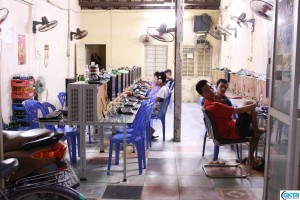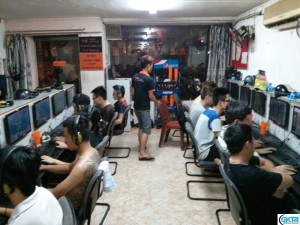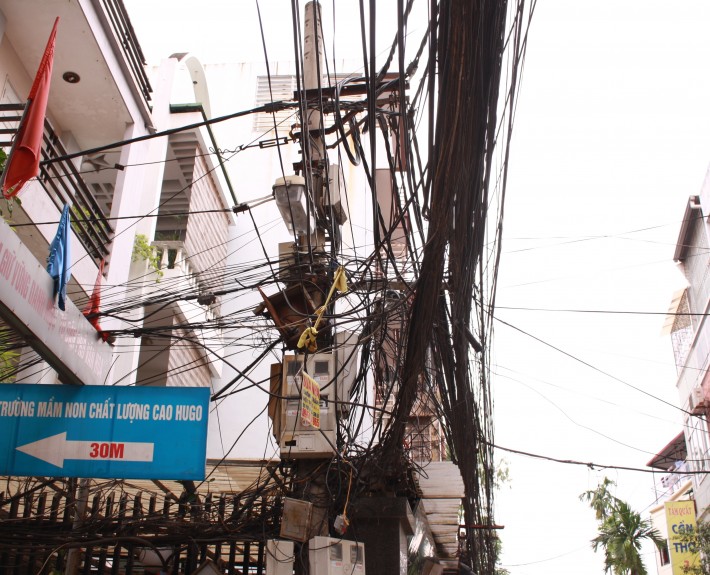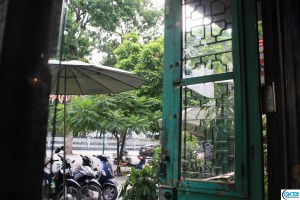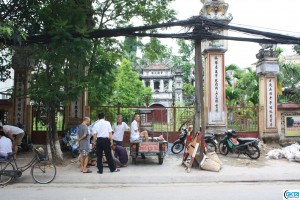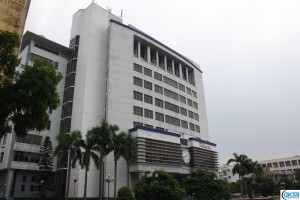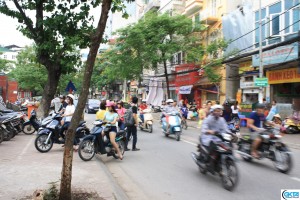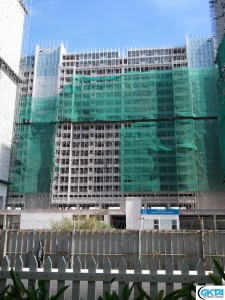Gaming in Vietnam
Vietnamese people love to play games—on the street they play co tuong, a traditional chess-like game. Groups of older men will crowd around the two opposing players to comment on strategy and prior moves. In older times, the best co tuong players would travel to different villages in Vietnam to challenge other players to prove they were truly the best.
In Asia, gambling is very popular and it ranges from betting on national sports teams (like football–soccer) to betting on the winner of cock fights at the local hangout. Currently, Vietnamese people are not even allowed to enter a casino in Vietnam, although the local policies may be changing in the future. Trips abroad to Macau (for those who can afford it), and closer in Cambodia across the Moc Bai border (where casinos specifically target Vietnamese consumers) will have to satisfy the demand for lucky money–at least for now.
So while the older generations are focused on traditional elements of gaming, the youth have turned to technology in the form of video, computer, and mobile games. And recently, the world has turned to Vietnam for a massive mobile gaming hit that seemed to rise on its own. If you know anything about gaming in Vietnam then chances are that you’ve heard of Flappy Bird. If you have never heard of Flappy Bird, the mobile game took the world by storm earlier this year and propelled its creator, Nguyen Dong, to fame and fortune.
Mr. Dong’s curious tweets about the massive public interest in his game only fueled additional press inquiries and an even greater amount of demand to download and play his game. Eventually, he pulled the game off the market only to exclusively re-release it on Amazon’s Fire TV platform.
However, Vietnam’s gaming scene is comprised of more than just Flappy Bird. Besides a robust coffee and cafe culture in Vietnam there are thousands of cyber cafes where young Vietnamese gamers play DOTA 2, League of Legends, and an assortment of games distributed or developed by local and international companies. Additionally, there are a number of independent game studios in Vietnam, as well as companies like Gameloft, and VNG, Vietnam’s premier internet company (and formerly known as VinaGame–revealing its origins).
A Match Made in Heaven
Gaming in Vietnam is a $200+ million industry with very high annual growth over the last three years. Even in an economic downturn gaming isn’t very negatively affected. If anything, less business activity allows workers to spend more time playing games to get through a dreary work day. It’s common to see security guards and desk-based customer service workers take some gaming breaks to help pass the time.
App distribution spans beyond just the Apple App Store or the Google Play Store in Vietnam. Third party marketplace like Appota offer an alternative to official marketplaces. Based on conversations with Appota and MWork representatives, there are estimated to be anywhere from 5,000-12,000 developers in Vietnam, which includes big companies and independent coders across the iOS, Android, and Windows Phone platforms.
iOS devices are seemingly everywhere in Saigon and Hanoi—and they will only increase in popularity as the middle class continues to rise in Vietnam. As smartphone sales continue to increase across Vietnam and Southeast Asia, the user base for games will automatically increase as well. And as new iterations of iPhone models come out, the rich and fashionable Vietnamese consumers acquire them and gift their old phones to family—perhaps to younger cousins who otherwise would not have an iPhone.
A Closer Look: League of Legends in Vietnam
League of Legends is the most popular MOBA (Massive Online Battle Arena) game in the world and is played by millions of people; in Vietnam, Vietnam Esports, distributes the game through its Garena+ client.
MOBA is typically a top-down five-player versus five-player (5v5 PvP) match where each player controls a different “Champion” class that has special abilities. The game has a few different game modes which become available to the player as s/he “levels-up” his/her champion.
The game modes can be divided into 3 distinctions: 5v5/3v3 PvP “Classic” style; Co-op versus the computer (AI) variant; and custom, which is used for tournaments and custom game modes. The objective of the classic 5v5 game is to destroy the opposing team’s Nexus, a strategic item. This goal is accomplished by first attacking the other team’s turrets; powerful defensive structures that guard each of the corridors between opposing bases.
Players are aided in their effort by “creeps” which can be compared to a pawn piece in a game of chess. These characters are only dangerous to a player in the early portion of the game, when the players are weaker.
After destroying all the turrets leading to the enemy’s base in a lane, players continue to push forward to destroy various defensive structures until reaching and destroying the Nexus. League of Legends also has an online store where players can purchase champions, character skins, and other in-game items (these micro-transactions are how Vietnam Esports primarily earns revenue).
There are two types of in-game currency: RP (Riot Points) and IP (Influence Points). Both types can be used to purchase champions but only RP are used for skins (a way to change a character’s appearance). For players who don’t want to spend money on virtual items, characters cost from 475 IP to 6,300 IP. A dedicated player can reach Level 7 to unlock most of the maps and game modes over the course of two days.
Vietnam Esports’ Game Operations division primarily localizes international content into Vietnamese. Riot Games, the developer of League of Legends, updates the game via patches that need to be translated into Vietnamese. The division also manages two websites: http://lienminh360.vn/ which is more community focused and the official league in Vietnam website: http://lienminh.garena.vn/. Besides patch notes, players can also find guides and other content that introduce new players to the game (they are very open-ended so that players may develop their own style when learning to play).
The website also has a section for tournament information; the top tournament tier is the Garena Premier League (GPL), which consists of the best teams in Southeast Asia (SEA) and Taiwan. Below that is the Dell Championship Series A, which is for the top eight teams in Vietnam, followed by Western Digital Championship Series B (WDCS B): the semi-pro tournament circuit. A mini tournament, called the GCafe Cup, is hosted every week. The way a player rises from the amateur ranks to become a pro is by moving up through each of the tournament circuits–a very competitive process.
Mobile and Multi(player) Approaches
Mobile game developers and studios are more popular in Vietnam than traditional development houses because it is less expensive to develop an application than it is to develop a computer or video game, which often require a large amount of staff. In some cases, a good mobile development team can be made up of a team leader, a coder, and a designer (if there needs to be three people at all). Plus, technologies like Unity 3D are leveling the playing field for development teams (in terms of costs and time) which means that the game concept, game design, and game mechanics will be even more important for differentiating quality games from clones and other apps that are riding popularity waves.
If a game is not a global hit, then for it to be successful in Vietnam it has to be localized to fit Vietnamese user preferences and expectations for games. The advantage here is for Vietnamese workers who have worked in foreign brand studios in Vietnam and have left to start their own development team (and who know the culture better than foreigners). They will have lower costs across the board to bring a product to the market. The safest route is to take a successful game product in China and to localize it for Vietnam–which is partly how VNG became so successful; this is a great strategy to reduce risk, especially for new entrants into the Vietnamese market. However, being truly innovative, especially in a “fringe” space, requires taking a risk to be contrarian and right. It will be interesting to see which strategy younger Vietnamese developers choose–both in the short term and in the future.

